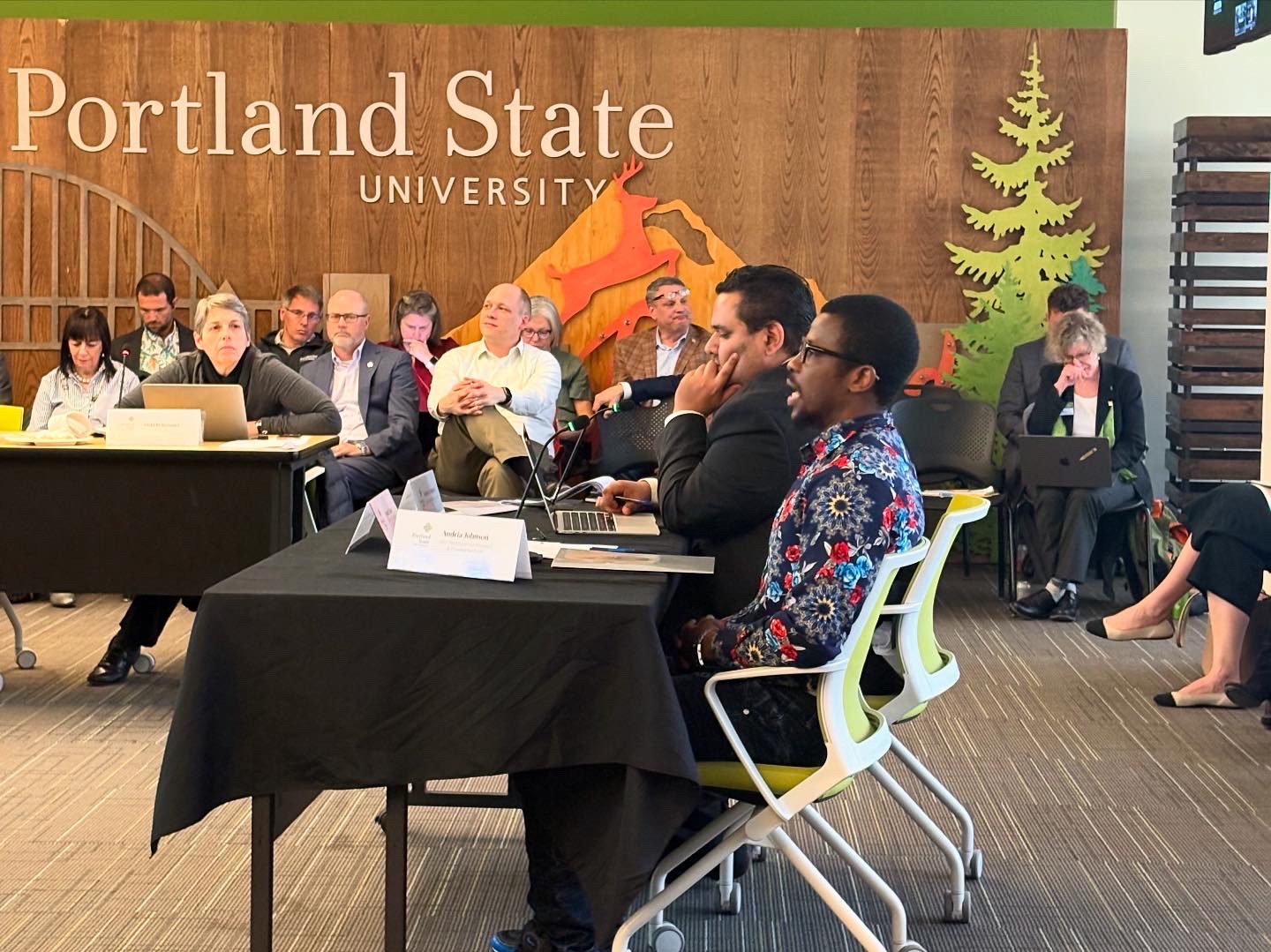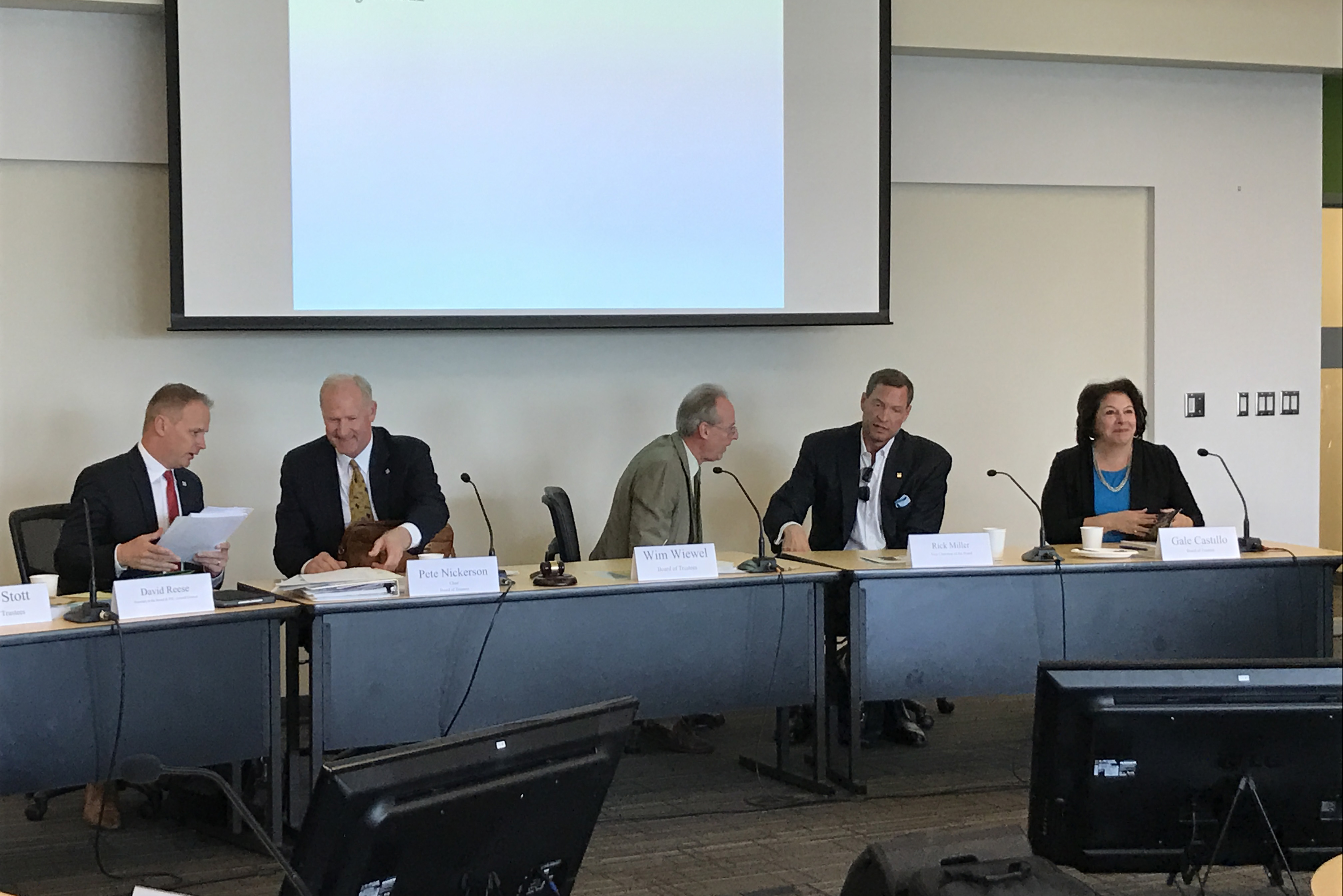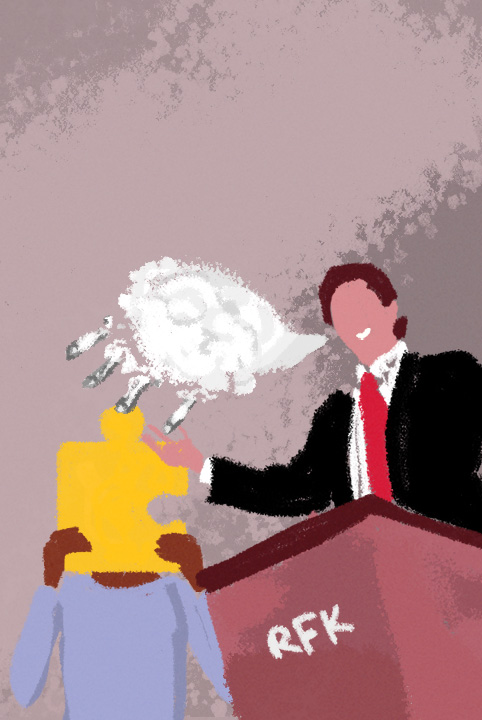For the first time since 1918, a total solar eclipse will traverse the entire United States and is set to do so on August 21, 2017. The eclipse is projected to begin crossing Oregon near Lincoln City. Portland State students will have a once-in-a-lifetime opportunity to view the eclipse close to home, and even closer with a capstone project partially funded by the National Aeronautics and Space Administration.
According to a NASA fact sheet, a total solar eclipse occurs when the path of the moon aligns with the sun. This alignment allows the two celestial objects to appear similar in size, allowing the moon to shield the sun from our view and providing observers with a 360-degree sunset. Observers can also look at the sun’s corona, or bright outer atmosphere, without eye protection during the peak moment of eclipse.
One group of PSU mechanical engineering majors will offer the public a never-before-seen perspective of Oregon under the eclipse for their senior capstone project. Using high-altitude balloons launched from the Oregon Coast, the capstone project will stream pictures and videos of the earth’s surface during the event.
The capstone project team members are Rihana Mungin, Olea Stevens, Chris Kettner, Alex Brouwer, Rory Driscoll and Audrey Lewis. Mungin and Stevens attended a high-altitude balloon workshop in Montana last summer, where they came up with the senior capstone idea. High-altitude balloons are made from thick rubber and can reach the stratosphere. The team’s highest balloon will reach 120,000 feet.
“The balloon starts out the size of a small car, like a Volkswagen Beetle,” Kettner said. “And then it expands as it goes up because of the change in pressure.”
Kettner explained that insulated payloads, which look like small styrofoam coolers, protect sensitive camera equipment and router-like devices that transmit images and video to the ground. To retrieve the cameras after the balloon bursts, Kettner explained, “There is either a parachute attached or some kind of thing to increase drag.”
The group is releasing four balloons total, one of which is funded by NASA. Most high-altitude balloons are launched everyday to track weather data. The capstone balloons will offer rare images of the atmosphere before, during and after the eclipse, which could reveal how the phenomenon affects weather and other factors.
“It’s just really hard to get things [to the stratosphere], to stay there for an extended period of time,” Mungin said. “So this is an opportunity to see what’s happening. It’s unprecedented.”
Pictures and videos from one of the capstone’s balloons will be available online from NASA. The capstone team is still deciding where to post images from their other three balloons.
Total solar eclipses occur about every 12–18 months. However, the chances of being in the right place at the right time to see one are small. Americans from Oregon to South Carolina will crowd viewing areas across the country. Many campsites are already booked and hotel prices are surging. Some hotels in Bend, Oregon, for example, have been sold out since last summer, and rates have risen to $1000 or more per night.
However, experiencing the eclipse in some way is possible for everyone. Senior Stephanie Clark will be in Montezuma, Costa Rica, for a yoga retreat during the eclipse. “I would not be surprised if the retreat is holding a special viewing or event for the solar eclipse,” Clark said. “My guess is we will be doing lots and lots of lunar salutations.”
Currently there are no trips set up for PSU students to see the eclipse from a major viewing point like the Oregon Coast, Salem, or Eastern Oregon. But there are opportunities to see the eclipse closer to Portland.
The Oregon Museum of Science and Industry will be hosting an eclipse viewing party at the Oregon State Fairgrounds in Salem. PSU Freshman Tyler Hayashi plans to watch what he can see of the event from the Portland Community College Sylvania Campus in Southwest Portland. “Should be one for the ages,” Hayashi said.
The eclipse and opportunity it provides to the senior capstone group may have re-inspired Stevens after years in the grueling mechanical engineering program.
“Before I went to the workshop, I was like, ‘I can’t wait to be done with school,'” Stevens said. “But now maybe I’ll go to grad school. These things are pretty interesting and exciting.”






